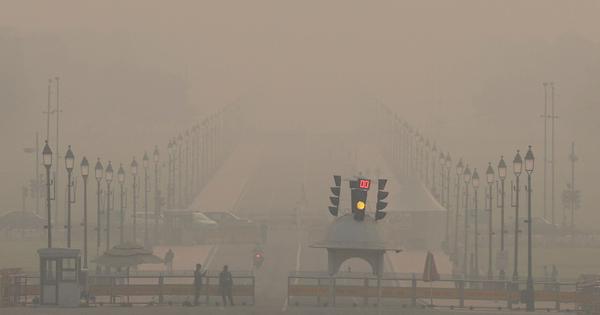
The Supreme Court on Monday directed the Commission for Air Quality Management to submit an affidavit with the action plan to prevent the air pollution from worsening in Delhi, reported Live Law.
A bench of Chief Justice BR Gavai and Justice K Vinod Chandran issued the direction after it was told that most air quality monitoring stations in the national capital remained closed during Diwali, according to Bar and Bench.
Advocate Aparajita Singh, amicus curiae in a case pertaining to air pollution in the National Capital Region, requested a report from the Commission for Air Quality Management on the current air pollution status.
The commission is a statutory body established in 2020 to address the air pollution in the National Capital Region and the adjoining areas.
“Out of 37 in Delhi, only nine monitoring systems were functioning during Diwali,” Bar and Bench quoted Sinha as telling the court.
Additional Solicitor General Aishwarya Bhati told the bench that a report would be filed, The Hindu reported.
Air quality deteriorates sharply in the winter months in Delhi, which is often ranked the world’s most polluted capital. Stubble burning in Punjab and Haryana, along with the lighting of firecrackers, vehicular pollution, falling temperatures, decreased wind speeds and emissions from industries and coal-fired plants contribute to the problem.
On October 15, the Supreme Court permitted the sale and use of green firecrackers in the Delhi-National Capital Region, subject to conditions.
The bench allowed the sale between October 18 and October 21 in designated locations, and limited the use of firecrackers from 6 am to 7 am and between 8 pm and 10 pm.
Green firecrackers are considered less polluting than regular ones as they are made with modified formulations and do not contain harmful elements such as lithium, arsenic, barium and lead.
Despite the restrictions, several residents lit crackers outside this period.
Delhi air quality remains ‘very poor’
On Tuesday, Delhi continued to be shrouded in toxic haze as the air quality in the national capital remained in the “very poor” category.
The average Air Quality Index at 10.05 am was 313, categorised as “very poor”, according to data from the Sameer application, which provides hourly updates published by the Central Pollution Control Board.
Four monitoring stations – Alipur, Anand Vihar, Bawana and Wazirpur – recorded “severe” air quality, with readings above 400.
The Union government’s Air Quality Early Warning System had on Sunday forecast that pollution levels would remain “very poor” until at least Tuesday.
An index value between 0 and 50 indicates “good” air quality, between 51 and 100 indicates “satisfactory” air quality and between 101 and 200 indicates “moderate” air quality. As the index value increases further, air quality deteriorates. A value of 201 and 300 means “poor” air quality, while between 301 and 400 indicates “very poor” air.
Between 401 and 450 indicates “severe” air pollution, while anything above the 450 threshold is termed “severe plus”.
Restrictions already in place
On October 19, the Commission for Air Quality Management had imposed Stage 2 restrictions under the Graded Response Action Plan to control pollution in Delhi and the adjoining areas in the National Capital Region.
The Graded Response Action Plan is a set of incremental anti-pollution measures that are triggered to prevent further worsening of air quality once it reaches a certain threshold in the Delhi-NCR region.
The second stage of the plan involves a ban on the use of coal and firewood, including tandoors in hotels, restaurants and open eateries. It also includes a ban on the use of diesel generator sets, except for emergency and essential services.
It further comprises measures such as the mechanical sweeping of roads and sprinkling water on them to keep the dust from rising, and intensified inspections for strict dust control measures at construction and demolition sites.
The restrictions under Stage 2 include the curbs under the first stage, which was imposed on October 14.
On Saturday, as pollution worsened, Delhi began enforcing a ban on the entry of commercial goods vehicles, except those running on CNG, LNG or electricity and compliant with BS-VI norms.
The restriction, issued on October 17 by the Commission for Air Quality Management in the National Capital Region and Adjoining Areas, came into effect on November 1.
BS norms, or Bharat Stage Emission Standards, are regulations set by the Indian government to control air pollutants from motor vehicles. The higher the Bharat Stage norm, the stricter the standard and the lower the permissible emissions.
Also read: Delhi’s failure to act against the biggest source of its air pollution – vehicles
📰 Crime Today News is proudly sponsored by DRYFRUIT & CO – A Brand by eFabby Global LLC
Design & Developed by Yes Mom Hosting






